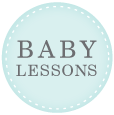After some pediatricians and occupational therapists clanged the alarm bell for years, the Consumer Protection Safety Commission had Fisher Price recall the Rock ‘n Play because of at least 50 linked infants deaths. Now, the CPSC has required Fisher Price to remove the substitutes for it, the 2-in-1 Soothe ’n Play Glider and the 4-in-1 Rock ’n Glide Soother. These are also due to infant deaths.
As a parent, how can you digest the day’s news calmly while creating a safe place for your baby? Below are the basics to safe infant positioning condensed. Keep in mind that the recommendations to support safety, development and head shape are the same. This is very good news. What is safest for your baby is also what supports head shape and development for the best.
Three Basics of Positioning your Infant for Safety, Development and Head Shape
1. The AAP recommends infants be placed on their back on a flat sleep surface. When the infant begins to roll, the AAP recommends allowing this to happen (it can be scary to see it happen at first but is good and desirable to support an infant’s development).
(Very important aside: The Snoo advertises that it is better to impede rolling and that the AAP recommends this. This is incorrect and can be detrimental to head shape and development. It is an unfortunately common scenario that we see in our office. More detailed information from CKD on the Snoo here.
No matter if it is a nap and you are watching your infant, or it is night time, place your infant flat and on her back at the start of every sleep (if she or he rolls from there, it’s fine). For reflux and other situations, talk to your pediatrician.
2. A blanket on the floor is your baby’s best friend. When your baby is awake and you are not holding her or him, a blanket on the floor is the most developmentally supportive position. Much of the marketing and “developmental awards” about how great the various swings and other equipment is inaccurate. Giving a baby something to look at is important, but that can be done while an infant is lying flat on her back, on her or his tummy, or propped on her or his side. Think about putting a mirror in front or to the side of your infant. The idea of a baby being “able to look around when he is in a swing” lends itself to a baby letting the world entertain him, rather than allowing him to interact with the world. Sure, being on a blanket on the floor might present some new and possibly even challenging experiences—like having to turn his/her head far to one side to see a certain toy or holding his/her head up while on his tummy— but when we present a baby with the “just right” challenge, it supports typical infant development. Your baby may need some time to get used to these experiences, which is normal for any human! That said, “crying it out” is not necessary. Please see our tips to tummy time and sidelying when awake to help make your baby’s play time fun for everyone.
3. Some equipment use may be needed depending on the particulars of your infant and family situation. It will help immensely if parents realize that equipment where an infant is inclined and harnessed in is for the benefit of the parent, not the baby’s development. That is not to induce guilt, it is to give parent’s real information to make the decisions that are best for their baby and family.
We believe that an informed parent makes better and different decisions. If equipment is used, we recommend a total of all devices (swings, Boppy pillows on back, bouncy seats, car seats, etc.) to be used for a maximum of two hours a day. That is a maximum of 14 hours a week.
Important Notes: Your wellbeing and need for sleep as a parent is vitally important. Those early weeks and months of an infant’s life are challenging for parents, somewhat like running a marathon. There’s no getting around how difficult it can be. However, if you are going beyond a certain point of challenge and dipping into frequent despair or anger or guilt, please seek out help. Help could be practical like a neighbor coming over to give you a break. Help could also be sharing with a mental health professional or your baby’s pediatrician to do a check-in about the level of severity you are experiencing.
Our hearts go out to new parents who are vulnerable and subjected to a barrage of opinions and information. Nothing in this post is meant to induce guilt, no judgement on our end at all. Our goal is to give parents needed basic information of safety, positioning, development and head shape.
If you are struggling to digest this information or are stumped on how to do tummy time or side lying when awake or anything else, seek out help from pediatric occupational and physical therapists.
Susan Klemm MS, OTR/L founded Carolina Kinder Development in 2006 to prevent and treat head, neck and developmental issues in infants. The ongoing developmental and orthopedic issues during the early years are also part of their services. Thanks to Stacy Conder, PT for her expertise and contributions to this post.






